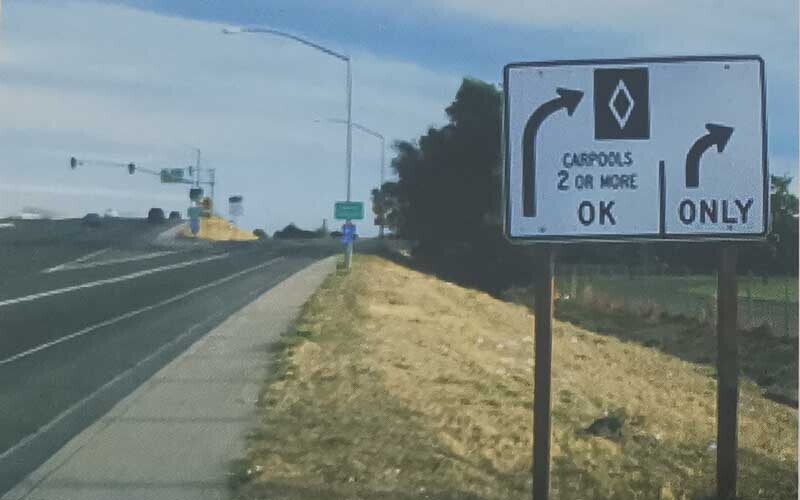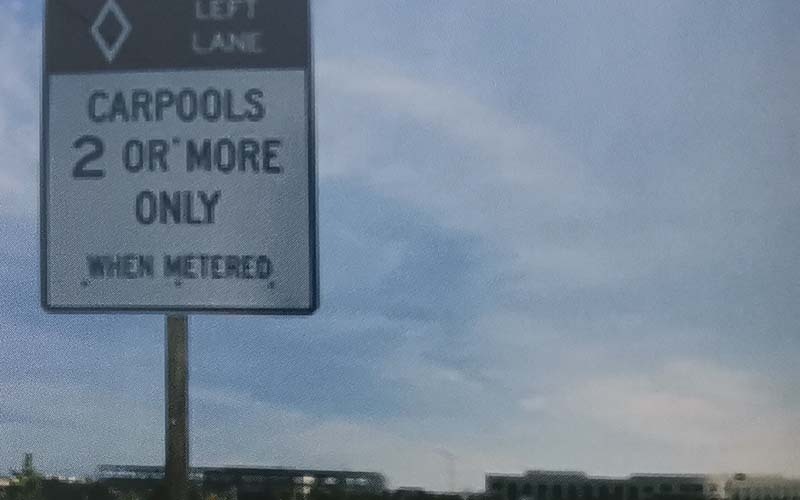Mingsheng Aluminum Sheet Home > faq > Aluminum Alloy > Definition and signage of carpool lanes
Definition and signage of carpool lanes
Author:Aluminum Sheeting for Trailers_Aluminum Trailer Siding Sheets_Mingsheng Aluminum Update time:2025-04-29 09:20:01A) Definition of Carpool Lane
Carpooling, also known as carpooling, is when two or more people share a vehicle. A lane specially created for carpooling is called a carpool lane. A carpool lane is one of the important traffic management facilities. They are provided to encourage people to use different modes of travelling instead of everyone driving. As a result of carpooling, the full capacity of vehicles increases, without increasing the capacity of vehicles on the road at the same time, but can reach the ‘people’ on the road to improve the capacity of the road, to play the effect of increasing the capacity of the road, so as to improve the operational efficiency of the road.
In the United States, the application of carpool lanes greatly lags behind the construction of the interstate highway system. Therefore, the implementation of carpool lanes can only be based on the existing highway facilities of the reconstruction or transformation. 1970s, the United States, California has tried to the existing ordinary lanes into carpool lanes, the results not only caused extensive traffic congestion, but also met with strong public opposition and failed. The only remaining option is to build additional carpool lanes on the limited land reserved for roads.
B) Characteristics of carpool lanes
As introduced earlier, most of the reserved land for highways in the United States is in the median. This determines that carpool lanes have to be located on the extreme left side of the existing roadway, which also determines the characteristics of the design and operation of carpool lanes. As far as design is concerned, the addition of a lane on the left side of an existing facility and the whole set of facilities necessary for its operation, whether in terms of alignment, drainage, structures, or ancillary facilities such as signs and markings, all face great challenges in design and implementation. For example, when the centre strip is narrow, it will inevitably face the problem of insufficient sight distance. As far as operation is concerned, both operational efficiency and safety are affected as the entry and exit of carpool vehicles need to intermingle with vehicles in the ordinary lanes. This is particularly the case when the entrance and exit of the carpool lane cannot provide a sufficient length of variable speed lane. At the same time, the efficient and reliable operation of the carpool lanes must control the unauthorised use of non-carpool vehicles, and the left-hand layout, unless special enforcement facilities are provided, poses a challenge to the safety of the Traffic Police in enforcing the law.
In conjunction with the mainline carpool lanes, the carpool lane system also includes ancillary facilities such as carpool priority lanes on the entrance ramps and park-and-ride car parks. The Ramp Priority Lane is a dedicated additional entrance ramp lane designed to maximise the convenience of carpooling into the mainline and to avoid queuing with non-carpooling vehicles at the ramp control signal at the entrance ramp. Even if carpool vehicles also need to queue, the frequency of ramp control flow restrictions in carpool lanes can usually be adjusted so that their waiting times are substantially less than those in the adjacent non-carpool lanes. This ancillary facility can increase the attractiveness of the carpool lane and promote improved travel mode choice behaviour.
Park-and-ride refers to switching modes of transport, i.e., from self-driving to carpooling or business car pooling, or even buses. Park-and-ride car parks are park-and-ride facilities that specifically serve the operation of carpool lanes. As a distribution point for passenger traffic, the car park is mostly constructed near mainline motorway interchanges for easy access. Carpool drivers arrive at the designated park-and-ride car parks regularly every morning, while carpool passengers first drive themselves to the interchange facility, park their cars and become carpool passengers. At the end of the evening, the carpool drivers gather at the unit car parks and when they arrive at the park-and-ride car park, the passengers then drive themselves home. This mode of operation reduces the number of self-driving vehicles on the mainline, increases the ‘human’ capacity of the existing mainline facilities, and of course reduces pollutant emissions. Carpool drivers are generally rotated among the carpoolers.
Carpool lanes can operate 24 hours a day or part of the day. These characteristics place high demands on the signage of carpool lanes. Information on who can and cannot use the carpool lane, what are the operating hours of the carpool lane, as well as violations and penalties must be communicated clearly and in a timely manner to every member of the driving public. The following is a systematic description of the signs associated with carpool lanes, from the entrance ramp, to the mainline, to the carpool lane exit. These signs include entrance advisories, definition of carpool, hours of operation, and violation penalty information. Other signs, such as speed limits and other signs that are similar to other facilities, are not described.

C) Signs related to carpool lanes
This sign is a rectangular layout with a white background, black lettering, black graphics, and a black border. The sign clearly defines carpooling as two or more persons travelling in the same vehicle. The sign also indicates that the entrance ramp is a two-lane roadway, with the left lane being the carpool lane and the right lane indicated by a right-turn arrow as a right-turn-only lane. The white diamond pattern on a black background in the middle of the sign is a special symbol for carpool lanes, which is why carpool lanes are sometimes called diamond lanes. The sign adopts a double-post support structure and is set at an appropriate position on the right side of the road upstream of the motorway entrance ramp. The motorway entrance totem pole series of signs, as well as the pavement sign, are visible from a distance downstream of the sign. The purpose of the sign is to promote lane splitting between carpool and non-carpool vehicles, thus contributing to lane splitting traffic management.
If the entrance ramp is long, an additional set or sets may be placed at appropriate locations. The sign repeats the carpool definition of the upstream sign, which in turn further confirms that the left lane is a diamond lane and only carpools of two or more people may use it.’ WHEN RAMP CONTROL SYSTEMS ARE OPERATING (WHEN METERED)’ warns motorists to use caution by advising that ramp control systems are installed at the entrance to the ramp.
Of note is the design of the markings on the entrance ramp. The ramp itself is a two-lane entrance ramp with a 10cm wide solid yellow line on the left side of the ramp and a 10cm wide solid white line on the right side. However, between the carpool lane and the normal lane, instead of using a dotted line like a normal lane demarcation line, a 10cm wide solid white line was used to separate the lanes. The ‘CAR POOL LANE’ road marking is used in conjunction with the lane marking to help drivers confirm that they are using the correct lane. It is important to note that a motorbike does not need to carry a passenger to be considered a carpool lane. Therefore, special signs are sometimes needed to encourage motorbike users to use them. Generally, the words ‘MOTORCYCLE OK’ are used to indicate that the motorbike is ready for use.

‘when the ramp control system is operating’. Sometimes, in order to further attract the driving public to use the carpool lane, the ramp control signal at the ramp entrance of the carpool lane is simply cancelled, so that carpool vehicles can get on the road without stopping. In this case, in order to avoid the habitual stopping of carpool drivers at the ramp entrance, a ‘No Stopping on Carpool Lane’ sign can be installed to clearly indicate that vehicles using the carpool lane do not have to stop because there is no on-ramp control signal installed on the carpool lane. However, in recent years, the rapid increase in carpool lane traffic has resulted in the need for ramp control on carpool lanes as well.’ The ‘No Stopping in Carpool Lane’ sign needs to be removed if necessary.
Carpool lanes can operate 24 hours a day or part of the day, e.g. during peak hours. For all-day operations, dedicated lanes with segregated facilities are generally available, while for peak-hour facilities, this is not necessary. An entrance and exit to a carpool lane system for all-day operation in the Los Angeles, California area. The system is segregated using markings and has designated locations for vehicles to enter and exit. Cantilevered signs indicate the location of the inlet with arrows to allow carpool vehicles to enter the lane. At the same time, another sign mounted on the cantilevered sign post indicates the exit location. Note that both signs carry a carpool lane exclusive design with a black background and white diamond markings, indicating that both signs are carpool lane exclusive signs. Since this is an all-day operation, it is not necessary to mark the system operating hours, thus simplifying the sign design.
Article Categories
New Article
Contact Us
Contact:Maddy
Add:No. 162 Jinbai Road, Zhengzhou City, Henan Province, China
